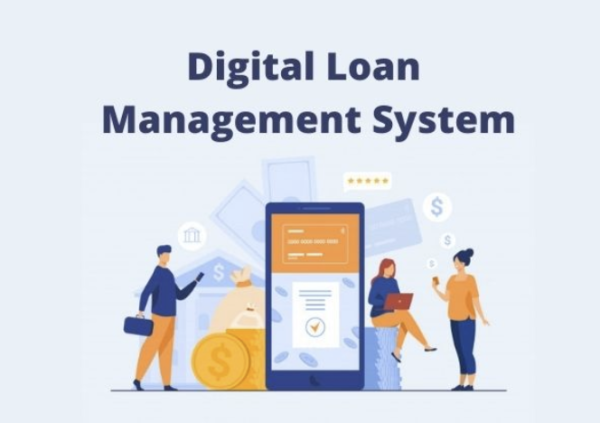5 Steps To Build A Loan Management System
Banks are moving away from the sluggish traditional loan origination system that created systemic delays. It was a tedious process for most banks with repetitive paperwork and human errors that were unavoidable because of workload fatigue for employees.
Thankfully, things are looking up with the digital transformation of loan origination solution. The entire end-to-end loan cycle is automated right from new customer onboarding to loan disbursal and review for covenants, all the steps are carried out with the help of robotic process automation or RPA technology. AI-based digital tools that can be integrated into a bank’s existing lending systems can help in automating every stage of the loan application cycle including important functions like underwriting a loan. The benefits of a loan management system are no longer ignored by banks and credit unions.
What is a digital loan management system?
A digital loan management or origination system where repetitive multi-step tasks that used to take up more than 50% of employee time are automated. The result is a smooth workflow process at a fraction of the time used in manual processes.
Automation is programmed and the algorithms are synced to admit through a coding process that takes care of anomalies like human errors. Since the process of loan application is set robotically for the entire cycle, there are no errors that are captured when the application is submitted, the credit assessment, or decisions.
With digital loans, even productivity is enhanced enabling the banks to scale their lending business growth after mitigating the risk and disbursing quality loans to eligible applicants.
Having understood the benefits of a digital loan management system, a bank must know how to proceed in establishing one. Here is a list of key points that one needs to take care of when rehauling a software or digital application of the lending function:
- Choosing the loan management system
Digitized loan solutions are embraced by Fintech and P2P lending platforms, and banks in a way will be competing with them. To ensure that banks remain as the forerunners of the lending business, they have to be very careful in picking the LOS or LMS very carefully. Before finalizing whether the entity will use a customized solution that will be tweaked as per the business requirements or partner with a technology company to design a proprietary solution, review the options available and integrate teams to give feedback in the selection process.
- Ask the right questions and seek the answers
A digital loan system can be integrated with old CRM without completely unplugging the former software. The benefit of integration helps in the seamless transition from the old turnkey software to the new automated end-to-end process without any lags or delays.
However, due diligence based on the existing system’s ability to incorporate the integration needs to be conducted after asking relevant questions and focusing on related solutions. An entity can conduct a feasibility report by:
- Defining short and long-term organizational goals
- Check the different platforms available and understand the differences in features
- Review the integration suitability of the tech tools with the current software
- Is data security prominent at all levels of the platform
- Can the system be customized as per the business logic
- Is it robust to scale with an increase in business volumes
- Vendor’s track record and track record of the core team
There are many technology solution partners, and selecting one that fits your requirement will need thorough research.
- Backtesting the system
Any loan origination system needs to be backtested and rolled out in phases so that daily business needs are not hampered. A bank cannot close its operations for any change management issues and looking to test the system on weekends and holidays will not serve the purpose. Any flaws or bugs in the system can be identified and fixed only when the system is rolled out and working full-fledged.
Implementation of new technology can become a nightmare issue for very small reasons. Though business-related people like employees understand that the situation is work-in-progress, the same level of understanding or tolerance cannot be expected from customers. Employees can be trained to help customers set the right expectation during the transition phase as the overall result will change once the system is completely implemented.
- Global roll-out
Banks with businesses in other countries can opt for a digital solution that can be customized as per local laws and cultural requirements. The system that the organization selects or builds needs to give utmost importance to business logic and incorporate local regulations to avoid legal complexities in any regional business.
- Ready-to-use versus customization
Depending on your organization’s current status and future goals, the decision to buy ready-to-use software that can be used within a day of installing it or customizing it is based.
If the size of operations is small and the entity would like to remain as a focused lender with consistent business from existing customers, without interest in scaling the volume but adding on value-based services, then a white paper software that can be used immediately makes sense.
However, if the operations are large, and the organization is looking to increase the volume of sales, move into green pastures in markets and also add value-based services, then it is practical to go for customizations that can cater to business requirements.
Conclusion:
Banks cannot hope to achieve and maintain future growth by increasing the volumes. There is a need to provide lending solutions to businesses that have long remained under-serviced due to the laggards of traditional banking systems. It is high time banks overhaul the old system reeling under the pressure of a new functional and utilitarian system that fixes all problems with improved features.
Digital systems are not just a competitive advantage but also the preference of consumers who are vigilant and informed about the scope of technology using AI and ML concepts. It is important to read the consumer insights and serve them with what they need as a proactive business strategy.























